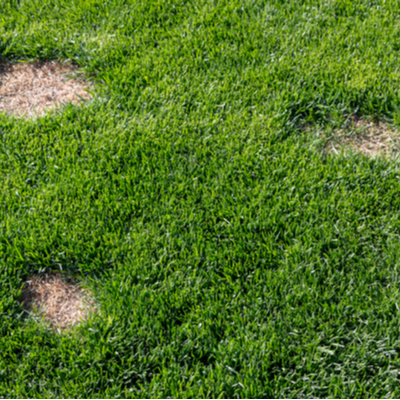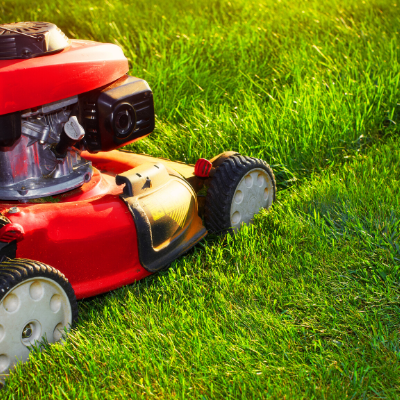When soil isn’t healthy, it’s very easy for turf disease to creep in. Without knowing what you’re dealing with or how to treat it, these diseases can destroy your garden and make it difficult for grass to recover. Here are some of the usual suspects to watch out for if you suspect you have turf disease.
Common Types Of Turf Disease
Just because you have a turf disease doesn’t mean you’ve failed at gardening. Because many of these problems are caused by microscopic mold and fungi, it’s impossible to eradicate every spore from your lawn completely. You may not even realize there’s a problem until it’s widespread.
Red Thread
Red Thread takes its name from the vine-like antler growths it produces. This fungus doesn’t actually harm the roots or leaves of the turfgrass. However, it does create unsightly patches. Thankfully, chemical control options aren’t necessarily needed. Since it doesn’t harm the grass, you can trim it back and apply certain fertilizers to keep it from cropping up in the future.
Necrotic Ring
Necrotic Ring is a perennial turf disease that develops in late summer and results in ring-like patches of dead grass. Unlike Red Thread, Necrotic Ring does affect the roots and leaves of the plant, as it is of the fungal variety. And it can be tricky to eradicate since it is a perennial. However, a good fungicide application and proper lawn care should take care of it.
Dollar Spot
Dollar Spot turf disease causes white lesions on blades of grass that start at the leaf tip and move downwards. Usually, these lesions are surrounded by a brown border. The disease will cluster out into small areas about the size of a half-dollar coin, and the area will appear sunken compared to the healthy grass surrounding it. There are three reasons your lawn may have this problem, and all of them are easy to remedy.
Leaf Spot Disease
Unlike Dollar Spot, Leaf Spot creates dark, black lesions on the leaves of trees and shrubs. These dark patches prevent photosynthesis from occurring, thus starving the plant of nutrients. While most Leaf Spot only affects a small part of the plant, you should look for treatment solutions if you notice a significant leaf loss over multiple years. Be sure to rake up excess leaves, don’t crowd plants in your garden, and, as always, make sure to prevent excess moisture from accumulating. Like the other turf diseases, Leaf Spot is caused by a member of the fungus family and can be treated with a fungicide.
Things You Can Do To Treat Lawn Disease
Keep Grass Nourished
Health, fertilized lawns are less likely to develop diseases. If you’re not sure what your lawn needs, consider performing a soil test. This will tell you which of three key nutrients – nitrogen, phosphorus, and potassium – that your lawn craves.
Mow Regularly
Keeping your grass at 2 – 3 inches in height will prevent tall strands that create a shady environment where microbes thrive.
Stick To A Watering Schedule
Grass needs about 1.5 inches of water per week at the maximum. If it rains, take this into consideration and don’t overwater with your hose or irrigation system. Excess water is a bacteria-friendly environment.
Thatch
As grass dies off, it becomes thatch in the lawn. While some thatch is beneficial, as it acts as a natural mulch, too much can choke out the grass and create a dark atmosphere for microbes to dwell. Dethatch your lawn will reduce the likelihood of disease and make it easier for air and sunlight to penetrate the grassroots. The more light, the less likely you’ll experience disease.
Hire A Professional
The easiest and surest way to eliminate lawn disease is to hire professional lawn care techs to treat your lawn with a fungicide. It will treat current diseases and prevent future ones.
If Your Lawn Is Diseased, Call Green Keeper
Mold, mildew, and fungi don’t stand a chance against the experts at Green Keeper. We offer lawn fungicide and disease control programs to get your turf back to looking its best. Call 901-861-2338 (Tennessee customers), or 662-895-2088 (northern Mississippi customers), or contact us online to get your lawn on the road to recovery. For more info and lawn care tips, be sure to read our monthly blog! And for the latest deals and offerings, don’t forget to like our page on Facebook!
